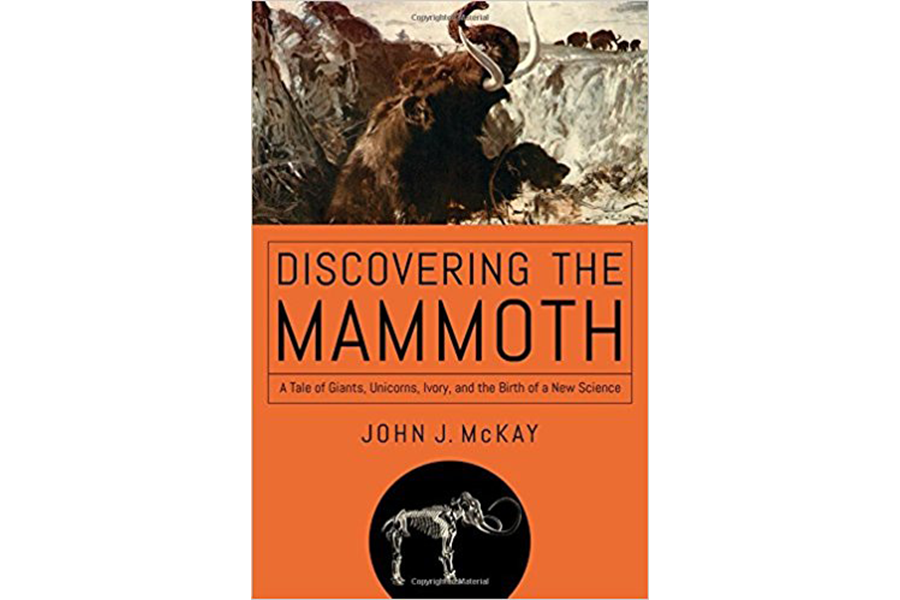How woolly mammoth bones baffled previous generations
Loading...
Scientists know woolly mammoth bones when they see them, and that's a good thing. In the US alone, every year or two brings the discovery of mammoth bones uncovered by the construction of a subway, stadium, or parking lot. They don't stay mysteries for long.
But imagine it's 100 or 200 or 500 years ago, and you've just discovered the fossilized bones of a humongous creature with a 10-foot skull.
What would you think it was? A human giant from biblical times? You might. Or perhaps you'd look at the gaping hole in the front of the skull and think: Eek, Cyclops! Or a unicorn. Or, if you're extra-creative, a sea monster that somehow ended up on land (double eek!).
In his new book Discovering the Mammoth: A Tale of Giants, Unicorns, Ivory, and the Birth of a New Science, technical writer and self-described mammoth enthusiast John McKay digs deep into human history to explore how we tackled the perplexing mystery of these extraordinary fossils.
"Everybody has their own way of looking at the world," McKay says, "but almost everywhere, people had no problem believing these were real animals or monsters that once lived."
In an interview with the Monitor, McKay talks about the evolving fossil theories, the challenges that the bones posed to faith, and what this all says about the human drive to understand.
Q: So what was a woolly mammoth? A kind of prehistoric giant hairy elephant?
That's pretty much what it is. They're related to elephants, part of a big and complex family tree.
As they moved into colder areas, they got progressively stockier and hairier. They were still running around after the pyramids were built, and the final ones to go extinct were on an island north of Siberia. They seem to have mostly died from inbreeding. They were terribly inbred and started to develop genetic problems.
Q: How did people come to think these bones were of giant humans?
They're trying to make sense of something that has no analog in the world around them because they hadn't seen elephants yet. They'd know what the typical big animals in their area are like, and they'd notice that these aren't like any of the animals they hunt or see.
They'd find a femur or a thigh bone and start laying the bones out: Here's the legs, the hips, the ribs and 5-fingered feet that look like human hands. They'd put it all together and make it into a human.
Q: Sometimes they'd assume these were giant humans from the bible. But they'd also come up with out-there ideas like the Cyclops. How did they figure that?
If you look at an elephant's skull, there's this giant opening in the front for the trunk. It looks like a giant eyehole, so they developed the Cyclops idea. And the tusks looked like fangs, perfect for a monster.
Q: How did some Europeans figure that the bones weren't from actual animals?
Some people in the medieval and early modern periods thought these were just rocks that resembled bones. There was a little bit of mysticism mixed in it too, the belief that there were forces within the earth that could cause something to take on the appearance of something else.
Q: How did the sea monster theory develop?
There was a belief that for every animal on the land, there was an equivalent animal in the sea: There were sea cows, sea horses, sea dogs.
Q: How did mammoth fossils challenge religion?
There was an idea that goes all the way back to Aristotle of the sacred chain of being: Everything in God's creation is neatly ranked, there's a place for everything, everything is in its place, because God is perfect.
Whatever God creates will also be perfect because there's no room for superfluous parts. Extinction would be somewhat sacrilegious, almost heretical. God didn't make things without a purpose.
Thanks to the fossils, people also came to the conclusion that the past had taken more time than the standard biblical chronology. There needed to be more time for all of these things to happen. That made a lot of religious authorities uncomfortable.
Q: What can we learn from your book about the human desire to solve mysteries?
It's human nature. We're homo sapiens, we're a smart animal, but it would really be better to call us a curious animal. It's not enough to just accept things as they are. We want to make integrated sense out of them.








